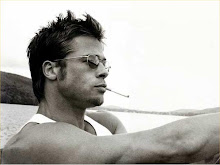All kung fu is about learning to “feel” (not just wing chun).
Many people think that "feeling" or "sensitivity" means you "feel" what is happening and react to it by "doing a move", like "pak sao" and "lap sao" or "kwan sao".
I believe this is much too slow to work in a truly violent situation.
Violence is chaos.
I believe that real violence simply happens much too fast to know how to react to it.
If I’m not mistaken, it was Mike Tyson who said, "everybody's got a plan until they get hit."
People train as if they are going to know what to do if the guy does this or what to do if the guy does that.
People think that if they develop "feeling" or "sensitivity", they will know how to react when the time comes.
In my experience, reacting is just too slow.
Reaction will always be flawed.
I train to remain calm and maintain a singular, steady intent in the midst of violence.
I don't train how to react to violence, I train how to be unaffected by it.
I train how to ignore it.
If I am reacting to what I feel, by doing "kung fu moves", I am not doing kung fu, I am imitating kung fu.
Maybe we have to know what kung fu is supposed to look like so that we know if we are on the right path or the wrong path.
Maybe imitating kung fu movements is a step in learning it.
Maybe an important step.
But imitating kung fu is not the same thing as doing kung fu.
Doing “moves” can help us begin to learn feeling, at first.
After we get a sense of feeling, we can stop doing moves and allow our selves to be moved.
When I follow my feeling, new moves magically start to appear when they are appropriate.
To me, this is the single most important fact about learning to “feel”:
EVERY MOVE FEELS EXACTLY THE SAME.
There is only one feeling to be learned.
If I know what several moves feel like, I know what all moves feel like.
I can ignore the moves, the moves are a distraction from what's really important. I focus on the constant, singular feeling that is kung fu.
I stop focusing on which "move" to use and focus on maintaining the same correct "feeling" at all times.
My goal is to maintain that singular feeling, that singular state of feeling, at all times.
I project energy and intent correctly and wait for the correct movement to happen.
This way I can learn any move I need.
I have not learned the third wing chun form, but I have seen moves from the third form appear in my chisao, just from following the same feeling at all times.
These moves don't happen on purpose.
They just happen.
When the wrong move happens, it's not because I "did" the wrong move.
It's because I lost that feeling.
I lost that one, true feling that I want to keep at all times.
I lost my connection during a transition.
Either I got disconnected, or I got stuck.
When the feeling is correct, I am relaxed and projecting energy outwards at all times.
My body is equally connected to the ground under my feet and to the ground under my partner’s feet, becoming a bridge.
I don't "make" a bridge.
I am the bridge.
So long as I maintain this feeling, projection and connection at all times, the correct moves just appear spontaneously, I don't have to "do" moves.
I just watch them happen.
It has taken me tremendous faith and diligence to learn kung fu this way, but the more I train this way, the more it works for me.
When it does work for me it is very, very powerful.
It is also one of the most addictive, blissful and pleasurable feelings in the world, when I can achieve it.
It is not at all strenuous.
It is effortlessness.
I don't have to struggle, I don't have to "try".
I feel relaxed and at peace in the midst of violence.
I believe this to be the true way of all traditional, non-sport martial arts, like Filipino Kali, Indonesian silat, taijiquan, Okinawan karate, etc…
Feeling is feeling, projecting energy is projecting energy, and connecting your center of mass to another person's center of mass is the same, regardless of stance or style.
This is what I try to feel every time I practice chisao.
Is there anybody else who has felt this?
Isn't there anybody else who wants to feel this?
Feng Shui Fundamentals Course #1 Registration
4 weeks ago





